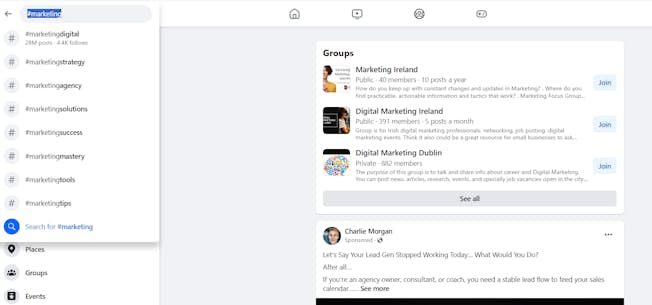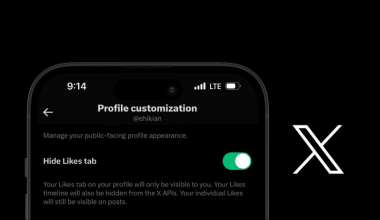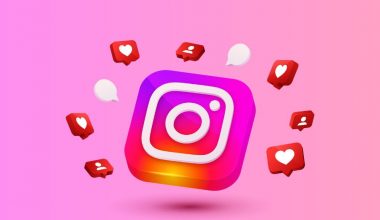Everyone on the internet has one intention: to blow up. Hashtags, being one of the sure ways to get you the engagement you deserve really fast, can be quite beneficial if you master the tricks and tips associated with them. Hashtag is an essential asset in your digital marketing toolbox, but how do you get the hang of it?
This article discusses hashtags in social media marketing. It provides a clear road map for deploying them effectively to reach your target audience and achieve brand objectives.
Key Points
- A hashtag is a word or phrase preceded by the “#” symbol used to categorize content across social media platforms.
- Hashtags help users discover relevant content by organizing posts into searchable categories.
- Using one to three relevant hashtags can be more effective than overloading posts with too many.
- Hashtags are widely used across platforms like Instagram, TikTok, and X (formerly Twitter) to boost engagement and visibility.
- It’s important to use specific, relevant, and memorable hashtags to connect with the target audience effectively.
What is a Hashtag?
A hashtag, which can also be used as the pound sign (#), is a powerful tool for promoting your information or content to a target audience. This term was first coined by an expert product designer, Chris Messina, on Twitter in 2007. The intention behind it was to prevent any sort of social network from becoming a dominant gatekeeper over others and instead make the social web as decentralized as possible. And, in turn, enable similarly-interested folks to find each other—whether they’re on Twitter, Instagram, Pinterest, TikTok, Reddit, or elsewhere.
Hashtags are words or phrases preceded by the “#” symbol, which categorize content across all major social media platforms. They are most commonly used on Instagram, TikTok, and Twitter.
The essence of using a hashtag on content based on its similarity with the supposed content is to enable people looking for that particular phase to find it easily.
So, in the background, when users search for a hashtag, they are given a feed of all posts tagged with that hashtag, allowing them to discover and interact with information that is relevant to their interests or what they are in search of.
What is the Hashtag Symbol?
The “#” represents the term itself. And how to use it by adding it to a word or phrase to make those searchable, clickable, and categorizable. Once the “#” is added, it then becomes a hashtag.
Prior to its use on social media, it was primarily recognized as a pound or number symbol. Musicians use the sign to differentiate a sharp note (for example, F#), and copy editors use it to denote the addition of a space. Just so you know, the symbol doesn’t just represent a hashtag.
In the early days of the internet, chatroom users referred to the sign as a “hash,” a term derived from programmers’ culture. That is where Messina, the founder I mentioned above in case you missed it, got the idea to reuse it on Twitter. Since then, the hashtag has overtaken the public glossary.
What is a Hashtag Used for?
A hashtag is used for a lot actually, a whole lot. You remember that one time it blew up an entire campaign and even stirred up social movement while at it. Take #MeToo and #BlackLivesMatter for an example. Also, note that when using a sentence as a hashtag, such as #usinghashtags, do not include any spaces; it won’t be a hashtag anymore.
It can contain integers but not symbols or punctuation. The hashtag can be added to the beginning, middle, or end of a social media post or comment, allowing the social media network to index what you’ve written. This method allows those who aren’t your fans or followers to discover your work nonetheless.
Tips for Using Hashtags
While it may appear that placing a hashtag in front of your phrase is easy, there are some additional basic tips that you should always have at the back of your mind while attempting to try out hashtags. Here are some of them:
- I won’t advise you to turn every word you come across into a hashtag. Some platforms don’t even offer that much space. However, in most circumstances, one to three hashtags can have a greater influence than many of them.
- Instead of trying to fit too many words into a single hashtag, keep it brief and memorable. Remember how #BlackOutTuesday was successfully used as part of the Black Lives Matter movement in America in 2020? The easier to memorize, the merrier.
- Don’t try to select hashtags that are overly smart or cryptic. If you choose a tag that no one will search for, your marketing will be ineffective because it will not be found! Put yourself in the shoes of your audience. What simple terms will you search for?
- Use exact and particular hashtags, as these will produce better results than wide or general ones. Broad phrases are unlikely to be searched, and if you employ them, your material will likely become lost in a sea of unrelated stuff.
- To reach the intended demographic, focus on hashtags with low or medium search volume. Using high-volume hashtags increases the danger of attracting spambots.
- Do not try to impose hashtags on every post. Instead, use them when they bring value and will likely spark debate and interaction. Don’t abuse them.
- Hashtags can be used to attract people from your target audience and conduct competitive research. Search with hashtags to find relevant information about your topic or the content you put out.
Here is a FREE DO’S AND DONT’S CHECKLIST to keep you in check:
Hashtag Do’s and Don’ts Checklist.pdf
Using Hashtags on Different Social Networks
Although hashtags can be used on any of the major social media sites, each has its own set of best practices:
How to Use Hashtags on X
Since hashtags originated from Twitter, they have been widely used on the platform more than on any other social media platform. Tweets and trendy topics all work with hashtags.

Using relevant hashtags on X (formerly Twitter) can boost engagement as long as you don’t go crazy. Just keep it minimal; it doesn’t hurt anyone. One or two hashtags per tweet should be okay to do the work intended. And even when your fans get to retweet your tweet, it will give your post more visibility.
The usage of hashtags on X will make your content more visible when people search for your tag. It can also help you find conversations to participate in. To find trendy hashtags on Twitter, either you go to the “search” function on the app, or you just go to the tweet button, tweet whatever it is on your mind, and click on “#,” and trendy hashtags will pop out for you to use.
How to Use Hashtags on Facebook
When trying to increase the visibility of your Facebook posts, hashtags can help because they increase organic reach. However, they are less popular on Facebook than on other platforms.
On Facebook, it is critical not to use too many hashtags. It is usually recommended to utilize only one or two. Using more than that will make you appear unprofessional and may trigger others who read your posts or pose off as cringe. Who will want to engage with that?

Simply putting a keyword into the search bar will bring up appropriate hashtags to use.
It can also be worth revisiting your best-performing Facebook posts and reposting them with relevant hashtags. This not only repurposes past content or posts that were popular with your followers, but it may also attract new ones who are interested in your product or service.
How to Use Hashtags on Instagram
Using hashtags on Instagram can boost reach and engagement, just like other social media platforms being mentioned. So feel free to use up to ten or eleven relevant and popular hashtags for Instagram Stories or Reels to reach the largest possible audience. Remember, you have a limit of 30 hashtags, so make sure to include the most important ones. You might not even need to exhaust that much, so just play around with it.
Popular hashtags, geographical hashtags, specialized hashtags, content-related hashtags, and sponsored hashtags are all effective combinations on Instagram.

To find the best hashtags to use for your Instagram, just go to your influencer’s accounts and discover one or two constant hashtags. You can look up as many influencers as you deem fit.
How to Use Hashtags on TikTok
TikTok users utilize hashtags on their videos to categorize content. These hashtags are also clickable, so your post will appear alongside other relevant videos. Using hashtags on TikTok, like on other social networks, increases reach and allows the TikTok algorithm to determine which users see your content on the all-important ‘ForYou’ tab. In fact, most times, most times when your post goes viral, you can just see the keyword it’s mostly ranking for by opening the particular video and checking the search box. Whatever phrase you see there must have been included in your hashtag.
TikTok’s caption restriction is 4,000 characters, so you can experiment with hashtags to find what works best. To maximize reach, try a mix of popular and niche hashtags.
Be mindful that TikTok hashtags change regularly, so check the ‘Discover’ page to see what’s popular.
What are the Benefits of Using Hashtags

This section of this article is to resound the benefits you get from using a hashtag, just in case you are still contemplating using it on your content via social media. Here are some of the key reasons why you should use hashtags in your social media strategy:
#1. Increases engagement
Just imagine there is a trend going on, like when the phrases “very demure, very mindful, and very cutesy” were used by almost everyone, and you then create content towards the trending phrase and also use it in your hashtags? What makes you feel you won’t attract engagements?
You can use hashtags to participate in larger conversations or trending topics, which can increase the reach of your posts, spark conversations, and attract even more attention.
You can also monitor these hashtags and engage with users who are using them. Like and comment on relevant posts, share user-generated content, or even run a contest or giveaway using hashtags to encourage engagement.
But while participating in these activities, always make sure you don’t come off as spam or use spammy hashtags. Stick to the relevant ones and use them as you should. To measure the amount of visibility a hashtag brings to your page, make use of tools to measure them.
#2. Makes your brand easier to find
When you have successfully used hashtags across your content to drive engagement and visibility, you are also automatically making your brand easier to find.
If you run a skincare company, you will need to need relevant hashtags like #skincare, #beauty, and #moisturizer in your post. By doing so, you are attracting users in need of the same hashtags, and once they find you, some can even be converted into potential clients.
You may also use branded hashtags to enable individuals who are already familiar with your brand to easily identify specific articles and pages.
#3. Adds further context to your posts
Hashtags link your posts to certain subjects or themes, making it easier for your audience to discover, comprehend, react to, and interact with your content.
Let’s say you’re sharing a new recipe that you’ve tried, including hashtags like #recipe can help make your post searchable and stand out from other non-recipe food posts.
This applies to other events or activities you are involved in; once you attach a hashtag to it, your content will have a deeper meaning. Hashtags are also excellent for sharing innovative visual images and adding context without having to write lengthy sections of text.
How to Find Effective Hashtags
Just because a hashtag is popular doesn’t imply it’s appropriate for your brand. Let’s look at how best you can source for hashtags:
#1. Use a social media listening tool
Some good tools, like Ritetag, can help you identify and keep track of relevant, trendy hashtags that can be tailored to your niche. These tools can also help you detect which hashtags your target audience is using and what topics capture their interest.
This helps you determine whether you’re using the right hashtags or if your strategy needs to be rethought.
#2. Review your competition

Studying your competitors’ internet strategy can help you find effective brand hashtags. You know that saying if you want to succeed in a business, find out what your competitors are up to and do it better. That same saying applies to hashtags, too.
Take your time to find out what brands share your offerings’ target demographic and brand image. Examine their posts and bio hashtags. Find brand-related themes. Assess their post engagement and choose hashtags to “share the space” with. Track the performance of competing hashtags in your posts.
In most cases, a competitor’s hashtag might not work for you. So, it’s best to understand your brand voice, audience, and niche and utilize more specific hashtags that resonate with your customers.
Conclusion
Hashtags are still very much in trend. In fact, it’s more important than ever for content performance. Dealing with the correct hashtags may generate community, brand visibility, and social engagement—and more.
Need help choosing hashtags for your brand? Contact me in the comment section.
Related Articles
- A Complete Guide to Hashtag Marketing Strategies, Examples for Effective Campaigns
- How I Use Hashtags on TikTok to Get More Views and Go Viral ( +Best Hashtags for TikTok)
- 11 Must-Follow Nigerian Fashion Blogs, Ranked!!! (All You Need!)
- Social Media Marketer Job Description and How to Become One in Nigeria
- The 12 Best Competitive Intelligence Tools to Gain a Strategic Advantage in 2024






